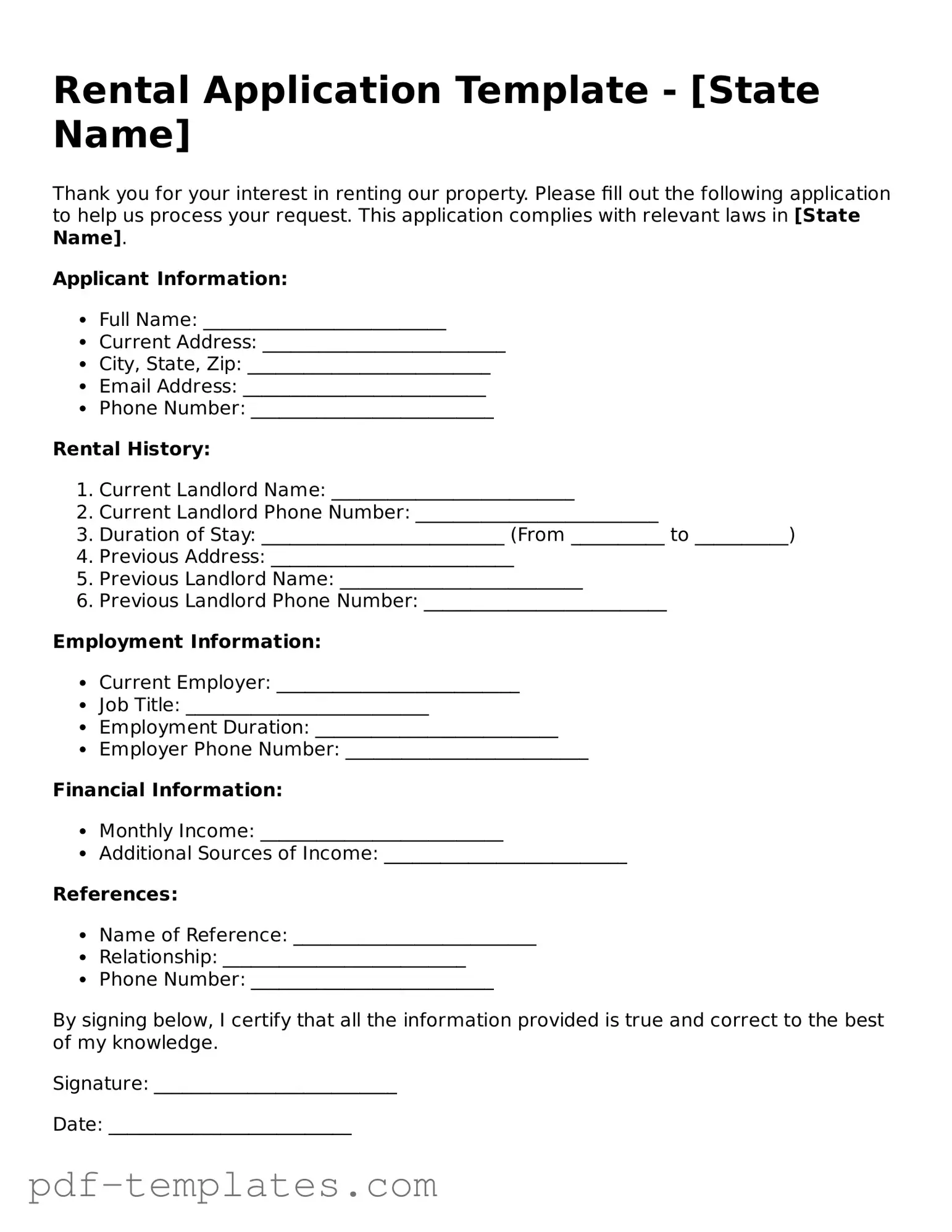The rental application form shares similarities with a job application form. Both documents require personal information, such as name, address, and contact details. They often ask for employment history and references. Just as employers seek to understand a candidate's qualifications and reliability, landlords want to assess a potential tenant's ability to pay rent and maintain the property. The thoroughness of both forms helps in making informed decisions about the applicant's suitability.
A lease agreement is another document closely related to a rental application. While the rental application assesses eligibility, the lease outlines the terms of the tenancy. Both documents serve to establish a legal relationship between parties. The lease agreement includes details such as rent amount, duration of stay, and rules for property use. Together, they create a framework for expectations and responsibilities in the landlord-tenant relationship.
A credit application is similar to a rental application in that it evaluates an individual's financial background. Both forms request information about income, debt, and credit history. Landlords often use credit applications to determine an applicant's financial stability and ability to meet rental obligations. This financial scrutiny is crucial for minimizing risks associated with non-payment or property damage.
Like a rental application, a background check form gathers information about an individual's history. Both documents may request personal details, including Social Security numbers and previous addresses. Background checks often include criminal history, which landlords may consider when deciding whether to approve an application. This process helps landlords ensure a safe living environment for current tenants.
A tenant screening form serves a similar purpose to a rental application. It collects comprehensive information about potential tenants, including employment status, rental history, and personal references. Both documents aim to verify the applicant's reliability and character. Tenant screening forms often incorporate additional checks, such as eviction history, which can be pivotal in the decision-making process.
A personal reference letter can also be compared to a rental application. While the application itself gathers information, the reference letter provides a personal endorsement of the applicant's character and reliability. Both documents help landlords assess the likelihood that a tenant will fulfill their obligations. A strong reference can enhance an applicant's chances of approval, similar to a well-completed rental application.
A roommate agreement has similarities with a rental application, particularly when multiple individuals are applying for a rental unit. Both documents require disclosure of personal information and financial responsibility. A roommate agreement outlines the expectations and responsibilities of each party living together, while a rental application helps landlords understand the dynamics of potential tenants. Both are essential for establishing clear communication and accountability.
Finally, a mortgage application bears resemblance to a rental application, particularly in terms of financial assessment. Both documents require detailed financial information, including income, debts, and credit history. While a mortgage application is focused on homeownership, the principles of evaluating financial stability and ability to meet obligations remain the same. Both processes aim to mitigate risk for the party extending credit or leasing property.
